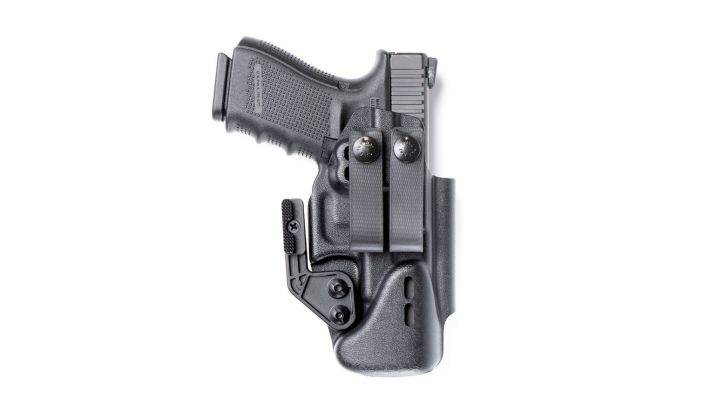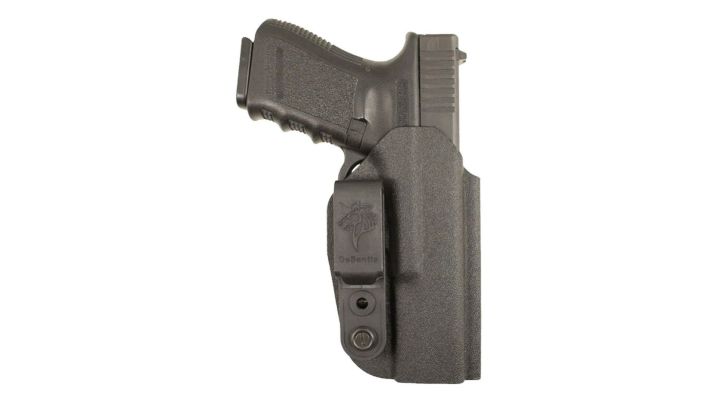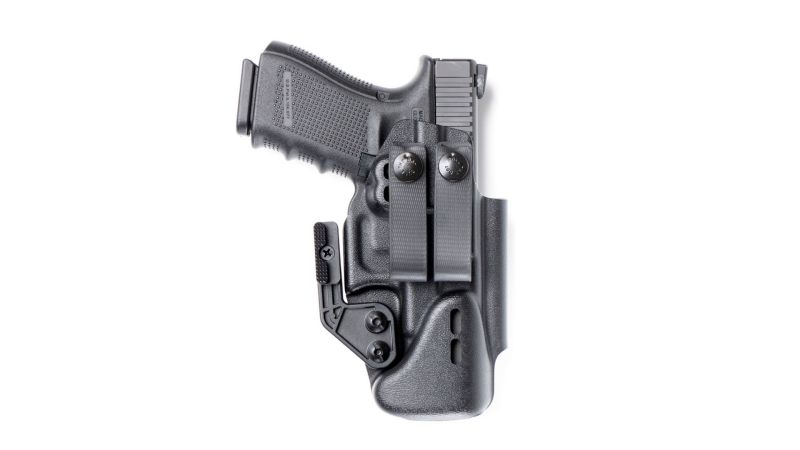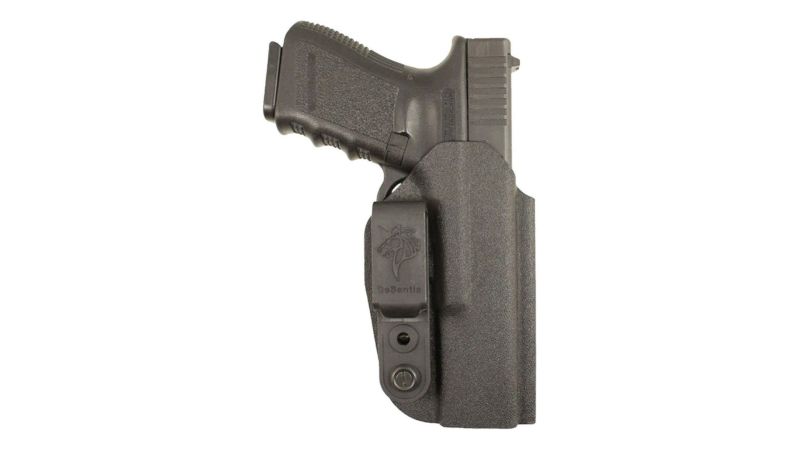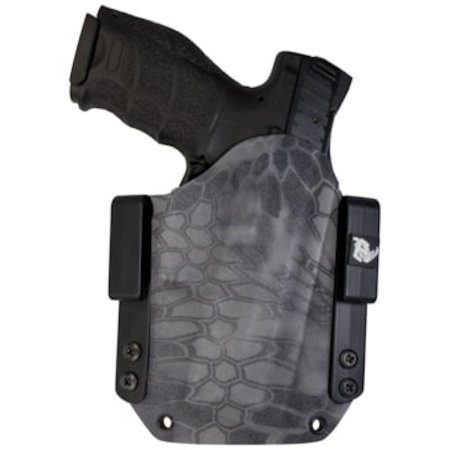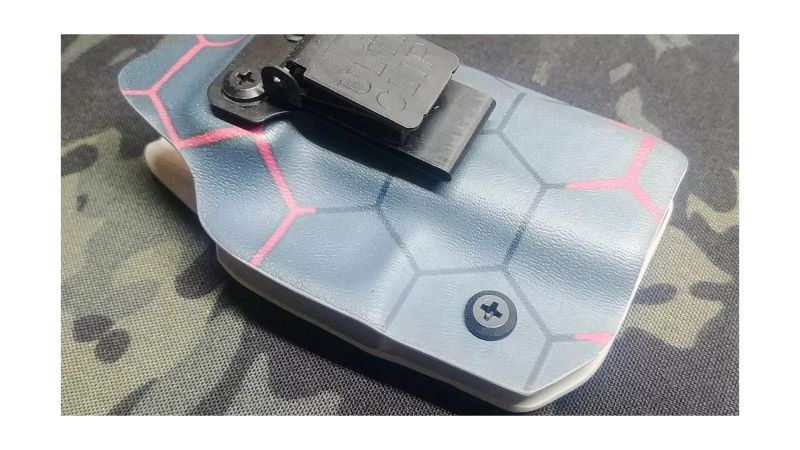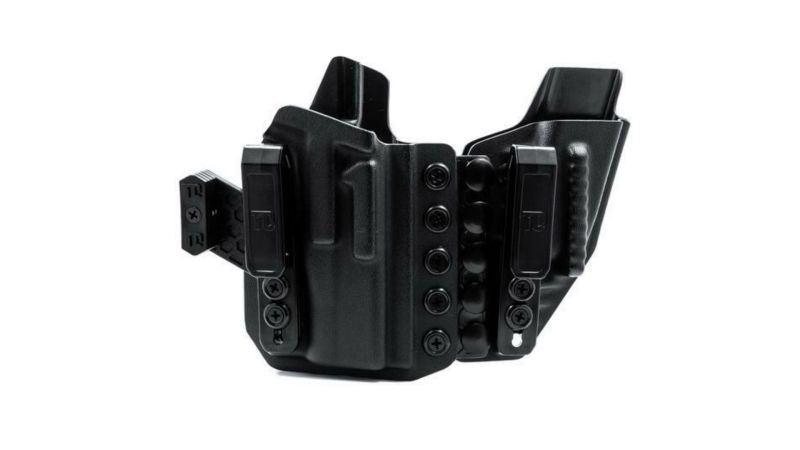We may earn revenue from the products available on this page and participate in affiliate programs.
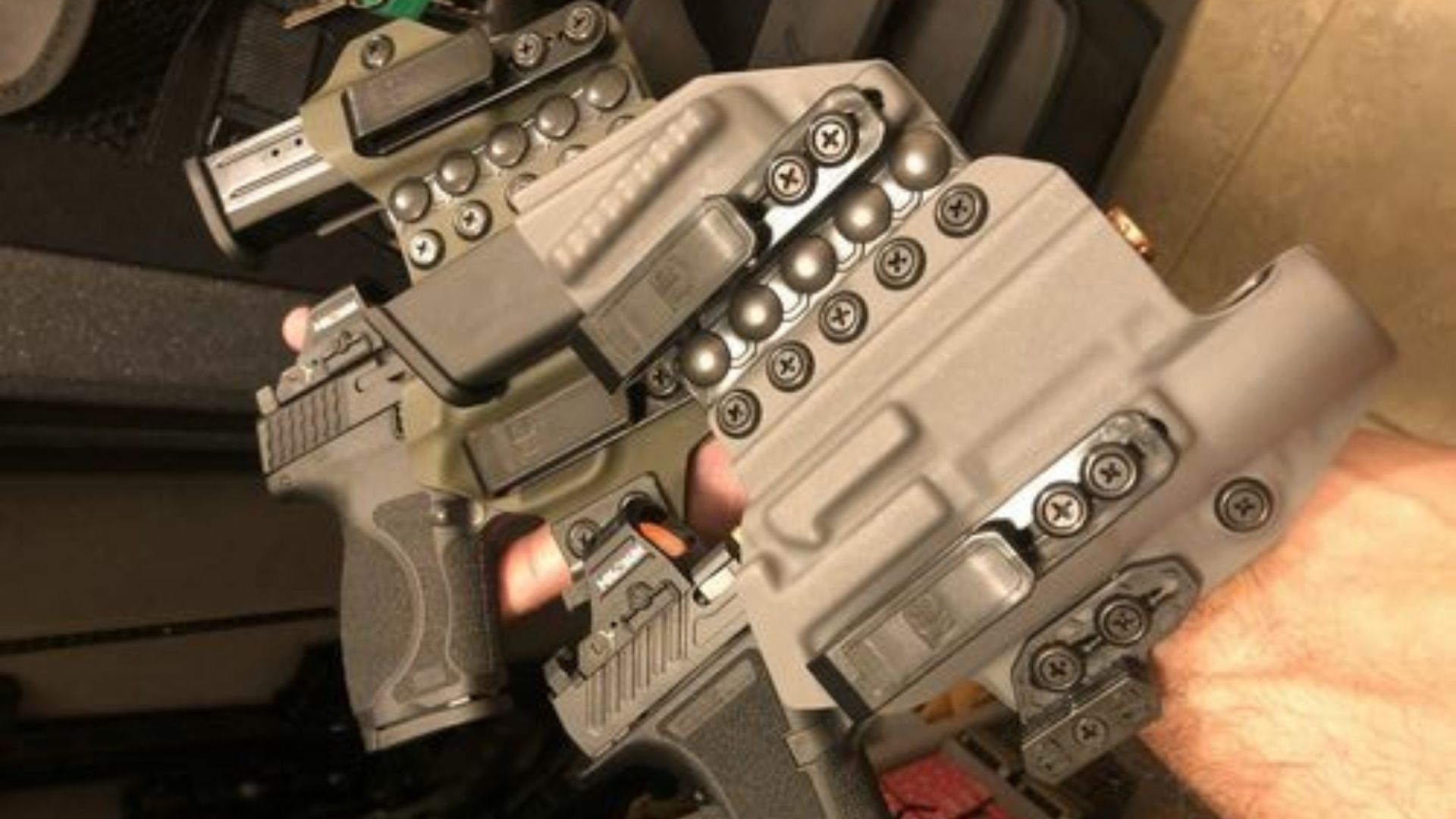
With so many options available, finding a good inside-the-waistband holster can feel like an overwhelming task. If that’s you, read on. In this article, I’ll not only show you the best IWB holsters available today but also how to find the best for you.
In this selection, I focused on performance and construction material. When you buy an IWB holster, you’ll want one that will resist wear and shield the trigger from accidental exposure. You’ll also notice that all the holsters on this list include a shell made of Kydex, which is a heat-moldable plastic. When it’s used to make holsters, it’s often molded for a specific make and model and will hold up over time.
Best Overall
Phlster Pro Series
Best Value
DeSantis Slim-Tuk
Editor’s Choice
Black Rhino Concealment TCS
Best Beltless Carry Holsters
Red Balloon Industries Beltless
Best Hybrid IWB Holsters
Black Arch Protos-M
Best Sidecar IWB Holsters
Tier 1 Concealed Agis Elite
Why you should trust us
While I write Task & Purpose fairly regularly, I am also a firearms instructor through my business Libertas Instruction. I was certified to teach concealed carry classes as well as defensive handgun and home defense skills by the United States Concealed Carry Association. Through my experience, I have handled many different holsters and developed an understanding of what makes a holster good. I am also happy to answer questions via my Twitter account @libertasinstruc.
Common types of IWB holsters
There are a wide range of IWB holsters. In fact, there are innumerable combinations, but they’re often categorized by where they’re meant to be worn and construction material. You’ll commonly hear terms like strong side, appendix, Kydex, and hybrid. In this section, I’ll cover what they mean.
Strongside carry
Strongside carry means carrying your handgun on the side closest to your dominant hand. Since it is literally within grasp, you’ll have a quicker time drawing and presenting your firearm. The opposite is weak-side carry, which would require you to reach across your body to draw your gun. Most instructors and professionals do not recommend weak-side carry.
Appendix carry
Appendix carry means positioning your holster by your appendix, which is in the lower right side of your abdomen, or usually to the right of your belt buckle. For many, it is an easy place to conceal a firearm and a more natural place to draw from.
There are two common types of appendix holsters. The first is simple in that it will only hold a firearm whereas the second type contains a sidecar capable of fitting a magazine and/or a knife. The latter can complicate things because it’ll take up more space, meaning it’ll be less comfortable.
Kydex holsters
Kydex is a trademarked polymer blend used for a range of applications, but in the gun world, it’s used to make holsters. Compared to traditional holster material like leather, Kydex is durable, lightweight, and won’t wear on your handgun.
Hybrid holsters
Common hybrid holsters consist of Kydex and another material. The main benefit of wearing a hybrid holster is comfort. The exterior material, whether it’s leather or nylon, is significantly more comfortable than raw Kydex, but you’ll still get Kydex performance.
The drawback to a hybrid is that leather and nylon absorb moisture and will wear out over time. Therefore, the best hybrid holsters use a three-fourths Kydex shell, to specifically protect the trigger area, and contain softer material in areas that touch your body.
Features to consider of IWB holsters
Material used
Most holster makers offer designs in nylon, leather, or Kydex. Of all three, Kydex is by far the most common for modern holsters. When compared to Kydex, leather and nylon just don’t hold up and protect your gun as well over time.
Retention
Retention refers to how well the holster can contain your firearm. For holsters in general, there’s passive retention and active retention. Passive retention relies on the fit and tightness of the holster against your gun. Whereas active retention refers to a device controlled by a button or switch that keeps your gun contained.
However, solid passive retention is a must-have feature for a good IWB holster. Your firearm shouldn’t move or shake inside the holster if you had to run or do some erratic movement. Holsters with good passive retention usually fit the form of a specific handgun model because the holster maker literally just made a mold.
Concealability
The main reason to use an IWB holster is to keep your firearm concealed, so if it doesn’t adequately conceal your firearm inside your waistband, it’s not working for you.
Pricing considerations for IWB holsters
IWB holster prices range from less than $10 to more than $150, but many good-quality ones fall somewhere in the $80 range.
- Low-end IWB holsters will use lower-quality construction materials, lack customized features and options, and have limited mounting options.
- Mid-range IWB holsters typically focus on good passive retention and concealability.
- High-end IWB holsters are a balancing act between the usefulness of added features and gimmicks.
How we chose our top picks
I based each pick on my own experience or the experiences of other firearm instructors. I deliberately excluded certain products like small-of-the-back IWB holsters as well as those constructed from materials like leather or nylon. I owned four of the holsters on the list, one I physically inspected during a training class, and the other was used by an instructor friend of mine. Additionally, I reviewed each holster for safety and durability.
FAQs on IWB holsters
You’ve got questions, Task & Purpose has answers.
Can you sit with an IWB holster?
A: Absolutely. Some inside the waistband holsters are easier to sit for long periods in different positions, based on your body type and how you’re wearing a holster. For some, appendix carry is the best position while in a vehicle. For others, this is the least comfortable.
What position do you wear an IWB holster?
A: Any position is viable. The usual positions are strong-side carry and appendix carry. Another is small-of-back carry, but I don’t recommend it. If you fall while carrying that way, you could suffer significant injury to your back.
Are IWB holsters comfortable?
A: It depends. A good everyday carry belt can mitigate some issues with some holsters, but cannot make up for bad holster design. Your body type and position of carry will determine comfort levels as well.
What is the most comfortable IWB holster?
A: Strong-side carry is generally the most comfortable position. This must be balanced with the other benefits or drawbacks of different carry positions.
Our gear section
Joel Mason did six years in the Iowa Army National Guard as an infantryman, with one tour in Afghanistan. Now he does firearms courses through his business, Libertas Instruction, as a USCCA Certified Instructor.
